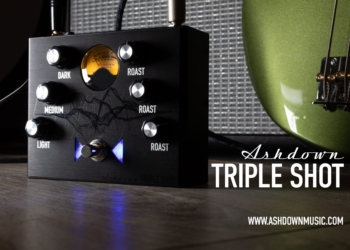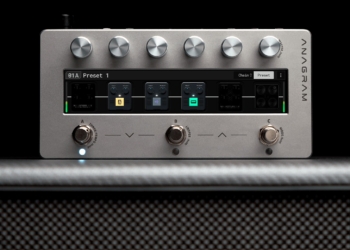I recently stumbled upon the Line 6 HX Stomp, and after seeing so much chatter online, I realized it’s been out since 2018. Not exactly new news, but I never really taken the time to dig into gear like this. For most of my gigs, I’m straight into the amp with minimal fuss. But, I admit, I’ve always kept an eye out for what modern players are using, especially when they rave about it. And the HX Stomp certainly got a lot of love from bassists, especially those playing amp-less gigs, flying out to shows, or streaming content. Intrigued, I started wondering if this could work as my gig rig.
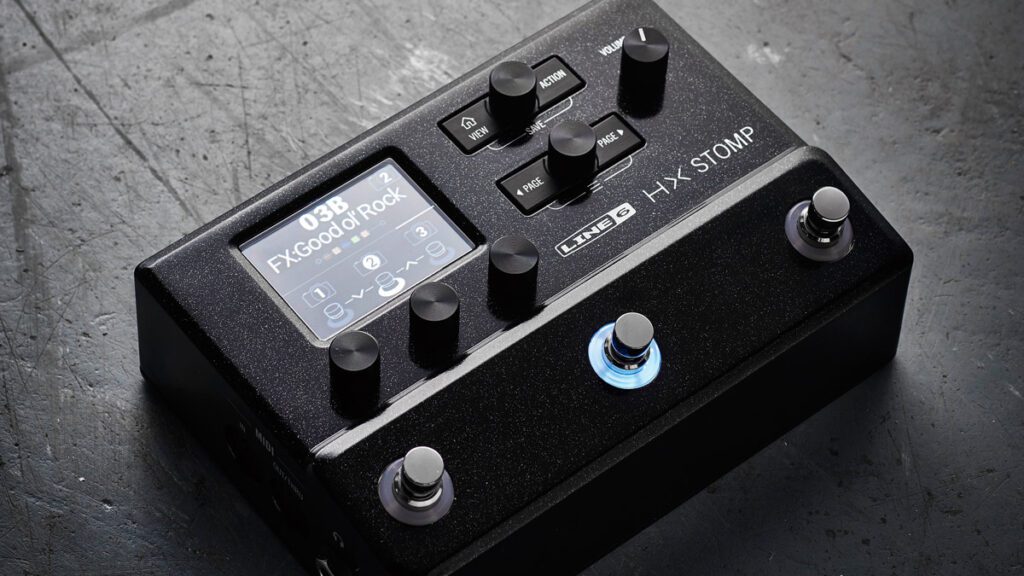
Why the Line 6 HX Stomp is a Game Changer for Bassists
I’ve been around the block with modeling gear, spending time with everything from Roland amp models to the original Line 6 PODs. Back then, I knew digital modeling had a long way to go before it could rival the warmth and depth of real amps. It was always a bit flat in live settings – nothing compared to the dynamic range of a true analog setup. But over the years, things have changed dramatically. With the advent of Impulse Response (IR) technology, models now pack in a ton of detail—mimicking specific amp/cab combos, mic types, and placements with incredible accuracy. This isn’t the same old digital stuff; it’s a whole new game.
When it comes to bass, the HX Stomp had already made waves with its guitar-centric tones, but with new firmware updates, it’s become much more bass-friendly. Now, you’ve got models like the Noble Bass DI (dubbed “Regal DI”), which is a simple preamp/DI, and a slew of amp models like Ampeg, Aguilar, Mesa, and even the Fender Bassman and Orange AD200. It’s not just about the amps though, there are tons of cab models, too, from the iconic Ampeg 810 to the more modern Eden D410XLT.
The icing on the cake? A variety of mic simulations, from the trusty Shure SM57 to Neumann condensers and AKG mics. If you’re into bass effects, you’ve got everything from Ampeg Scrambler and Sans Amp models to more modern offerings like the Darkglass Microtubes B7K.

Now, I’ll admit, I was a bit intimidated by the sheer amount of features packed into this tiny device. It had been a while since I had to learn something this deep, but after getting the HX Edit software and updating to the latest firmware, the process was smoother than I expected. The HX Edit software is intuitive and gives you a nice visual representation of everything going on inside the box. But once I was familiar with the basics, I found I preferred editing directly on the Stomp itself. The on-board knobs and buttons are simple and effective for making adjustments on the fly.
One of the great things about hopping onto the HX Stomp train a little later is the mountain of resources already available online. YouTube tutorials are a goldmine, and players like Ian Martin Allison and Janek Gwizdala have gone deep with their setups, even sharing custom presets.
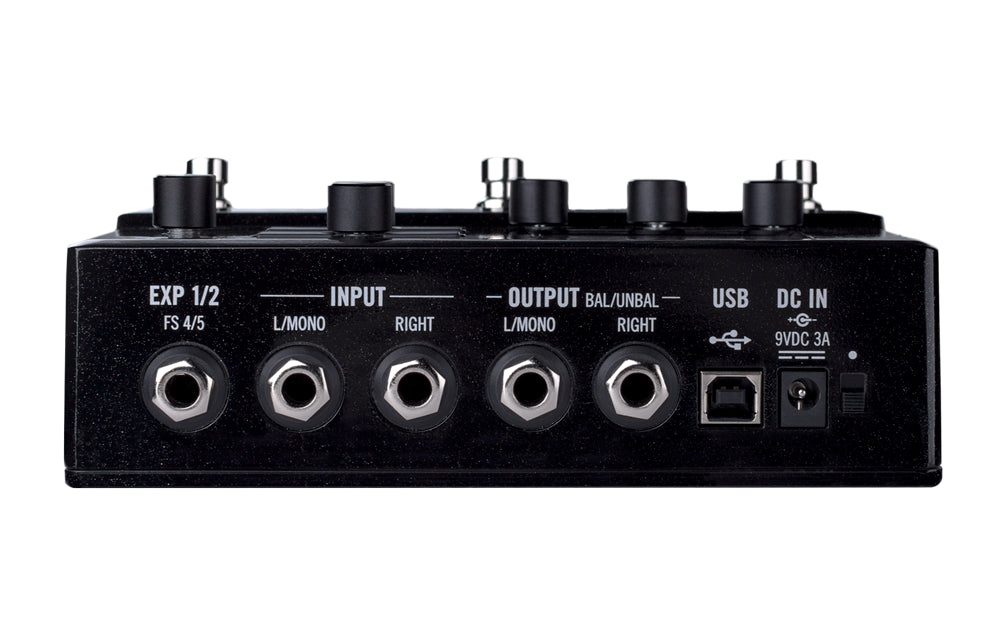
How to Make the Most of the HX Stomp for Live Performances
For someone like me, who doesn’t typically use many effects, the big question was: how would I actually use this in a live setting? The HX Stomp is packed with possibilities, and the internal routing and signal path flexibility are where it really shines. You can customize your entire setup, assign footswitches, build dual signal paths, or even use multiple amps. It’s essentially a digital command center for your performance, and the three footswitches work great for my needs, but you can expand it with an external footswitch for even more control.
I wanted to see if the HX Stomp could serve as my go-to tone, even without any effects. Naturally, I gravitated toward the Ampeg B-15 model, which is a staple in many of the genres I play. The Ampeg B-15NF in the HX Stomp is modeled after the iconic 1965 version, and after tweaking the usual tone controls, Drive, Bass, Mid, Treble, I was quickly dialed into a classic sound. What really impressed me, though, were the advanced parameters like Sag, Hum, and Bias, which gave me more control over the amp’s dynamic response.
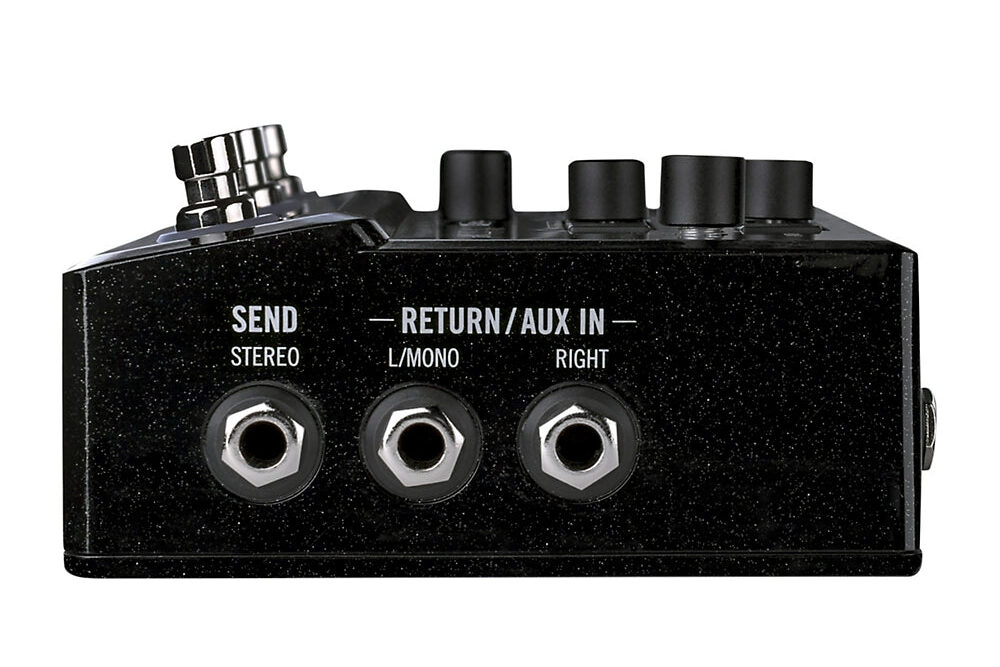
One thing I found was that the cabinet simulation wasn’t as necessary when using my own physical cab. With the HX Stomp running through my existing setup, I found that the real cab’s presence worked best on its own, and the cab sim could be more useful in a direct-to-PA situation or with a FRFR (Full Range Flat Response) speaker.
I’ve only scratched the surface of what the HX Stomp can do. In a live setting, it’s more than capable of delivering high-quality bass tones, and for recording, it’s a total game changer. The USB out makes recording a breeze, and in the studio, it’s like having a whole collection of amps and pedals right in your pocket. For someone who typically avoids effects, the amp models themselves are so good that they’ve inspired me to explore new sounds. And if you love effects? There’s a practically endless range of possibilities – just be ready to put in the work to create your own presets. The factory presets lean a bit toward guitars, but with the right tweaks, you can dial in some killer bass tones.
The Line 6 HX Stomp is a versatile powerhouse that works for bass players across the board. Whether you’re looking to go amp-less, simplify your rig, or dive deep into effects and custom sounds, it can handle it all. The possibilities are truly endless, but for me, the ability to dial in a reliable, dynamic amp tone with minimal fuss makes it a keeper. If you’re on the fence, I’d recommend diving in, there’s a ton of online support and a passionate community that’s more than willing to share their insights. With the HX Stomp, I’m not just adding new tools to my kit, I’m unlocking a whole new world of sound.
